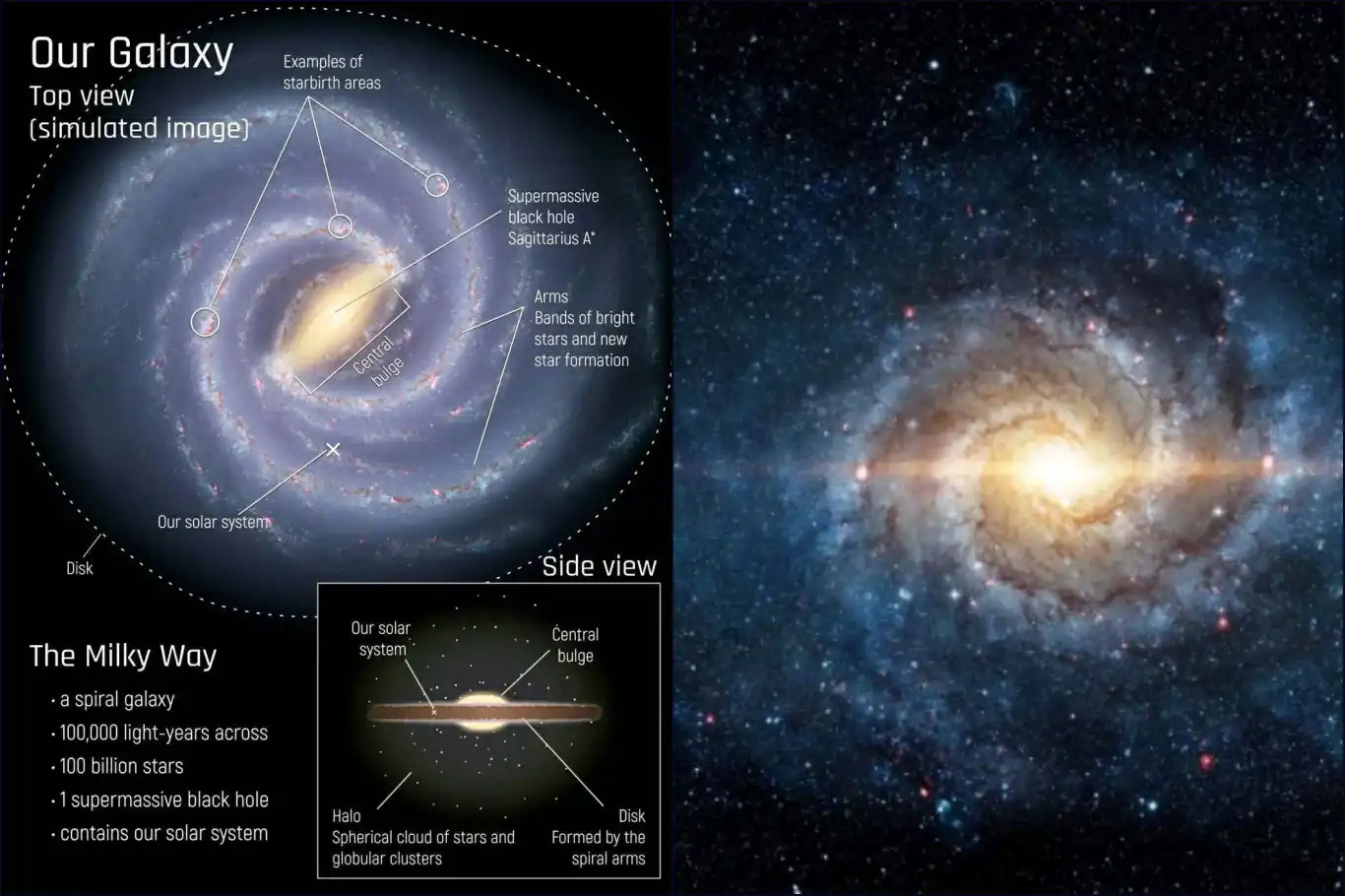Scientists build first Milky Way simulation tracking 100 billion stars with artificial intelligence


Scientists have developed the first-ever simulation capable of modeling all 100 billion stars in the Milky Way, using artificial intelligence to run galaxy-scale physics around 100 times faster than previous techniques.
The breakthrough AI-assisted model offers the most detailed reconstruction to date of how the galaxy evolves over time, tracking individual stars across 10,000 years of galactic history. Until now, the largest simulations grouped stars into clusters, limiting the precision needed to understand small-scale processes that shape galactic evolution.
The project—led by researcher Keiya Hirashima from the RIKEN Center for Interdisciplinary Theoretical and Mathematical Sciences (iTHEMS) in Japan, in collaboration with the University of Tokyo and the University of Barcelona—was recently presented at SC’25, the International Conference for High Performance Computing, Networking, Storage, and Analysis.
According to the team, understanding the Milky Way’s formation requires simulations that capture its massive spiral structure as well as the physics of individual stars and supernovae. However, modelling these processes has long been computationally prohibitive. Events such as supernova explosions occur rapidly, forcing simulations to advance in extremely small time steps—making a billion years of evolution take decades on even the fastest systems.
To overcome this challenge, the researchers introduced a deep-learning surrogate model trained on high-resolution simulations of supernova dynamics. The AI learned to predict how gas expands and disperses in the 100,000 years following a stellar explosion. This allowed the main simulation to progress much more quickly while maintaining detailed accuracy.
The system was validated using Japan’s Fugaku supercomputer and the University of Tokyo’s Miyabi system. As a result, the team achieved a full-scale Milky Way simulation with true single-star resolution. One million years of galactic evolution can now be computed in just 2.78 hours; a full billion-year simulation would take approximately 115 days—compared to an estimated 36 years with earlier methods.
Beyond astrophysics, the researchers say the hybrid AI-physics approach holds potential for a wide range of scientific fields. According to the study, similar frameworks could be used to accelerate simulations of cosmic structure formation, black hole accretion, climate modeling, weather forecasting, and turbulence.
Hirashima described the achievement as a major shift in computational science. “Integrating AI with high-performance computing marks a fundamental change in how we approach multi-scale, multi-physics problems,” he said. “AI-accelerated simulations can become genuine tools for scientific discovery—helping us trace how the elements that formed life itself emerged within our galaxy.”
The team’s next goal is to scale the technique further and explore its applications in Earth system modeling and other complex simulations. (ILKHA)
LEGAL WARNING: All rights of the published news, photos and videos are reserved by İlke Haber Ajansı Basın Yayın San. Trade A.Ş. Under no circumstances can all or part of the news, photos and videos be used without a written contract or subscription.
Malaysia’s communications regulator announced on Monday that major internet messaging and social media platforms with at least eight million users in the country will be automatically deemed registered as Class License holders beginning Jan. 1, 2026.
Artificial intelligence has, for the first time, been used to autonomously guide a free-flying robot aboard the International Space Station, marking a significant breakthrough in space robotics and autonomous mission operations.
China successfully placed nine satellites into orbit aboard its Lijian-1 (Kinetica-1 Y11) carrier rocket, including an Earth-observation satellite developed under the leadership of the United Arab Emirates (UAE).
A major new study by the Oxford Internet Institute and the AI Security Institute has revealed that conversational artificial intelligence systems can significantly influence people’s political beliefs, raising serious concerns about the future of democratic processes and election integrity.